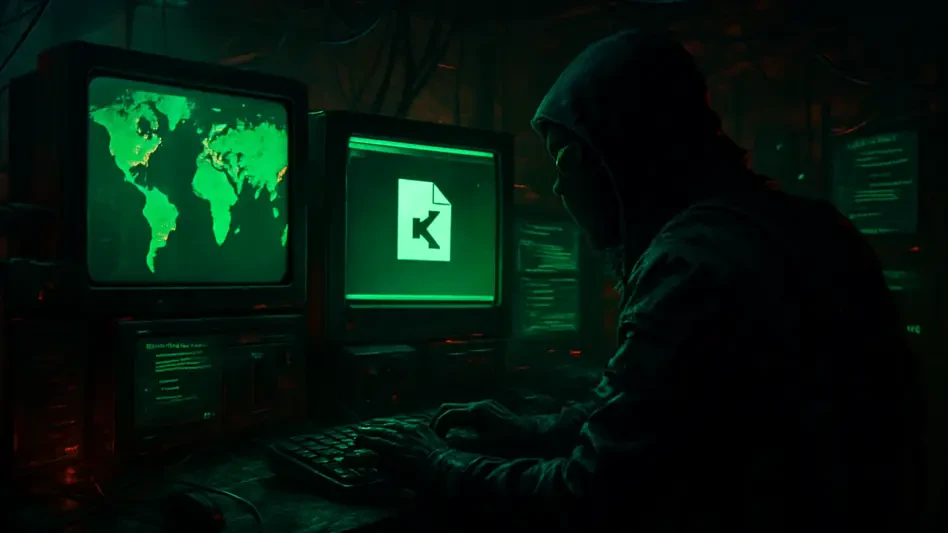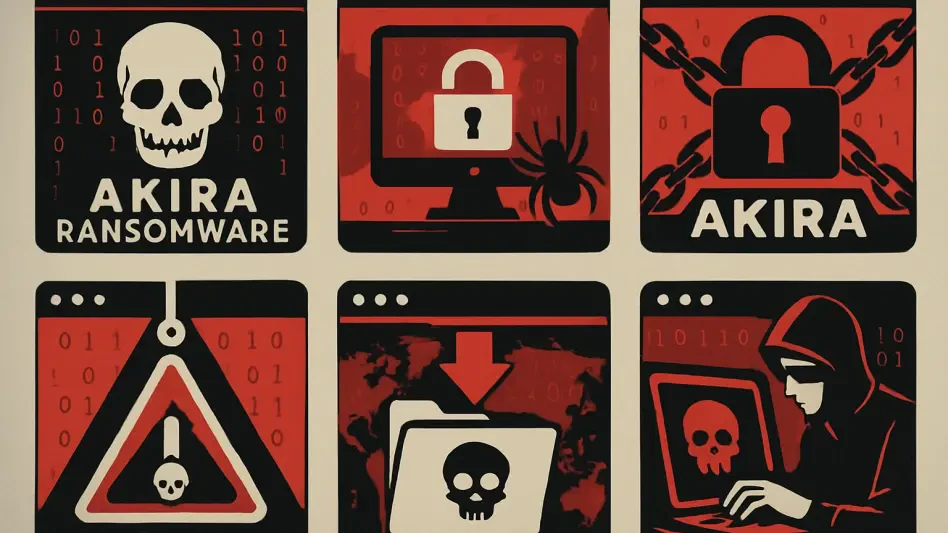In today’s digital economy, cybersecurity is more crucial than ever. With an increasing number of threats targeting organizations, a comprehensive vulnerability assessment program is indispensable. Understanding the key components and best practices of vulnerability assessments can significantly enhance your security posture. This article examines the top strategies for implementing an effective vulnerability management program.
Understanding Vulnerability Assessment
A vulnerability assessment is a detailed evaluation of IT infrastructure aimed at identifying exploitable risks. It encompasses various methods, including automatic scanning tools, manual tests, and penetration testing, to map out the most vulnerable areas. Security teams derive actionable insights from these assessments, crafting detailed plans to secure exposed points. This foundational step ensures ongoing identification, addressing issues, and continuous monitoring. From network checks to code reviews, vulnerability assessments are all-encompassing.
The ultimate goal of vulnerability assessments is to proactively identify and rectify vulnerabilities before they can be exploited by malicious entities. Regular and systematic assessments enable organizations to stay ahead of potential threats and ensure their systems are fortified against cyberattacks. Businesses can then tailor their security strategies to focus on the most critical vulnerabilities, employing a risk-based approach for efficient resource allocation.
Importance of Early Detection
Early detection of vulnerabilities is paramount for maintaining robust cybersecurity defenses. Regular scanning and vigilance are needed to prevent cybersecurity breaches before they can inflict significant damage on an organization’s systems. Addressing vulnerabilities promptly ensures that any potential exploits are mitigated before malicious actors can take advantage of them. This approach is essential for keeping businesses secure and minimizing the impact of potential security breaches.
Effective vulnerability management entails implementing stringent measures for early patching of detected vulnerabilities. This containment strategy prevents the spread of vulnerabilities from one system to another, thereby limiting the scope of possible cyberattacks. By rectifying vulnerabilities swiftly, organizations can significantly curtail the likelihood of widespread damage, safeguarding their critical assets from harm.
Ensuring Regulatory Compliance
Adhering to best practices in vulnerability management is not just about security; it’s also about compliance. Proper assessments ensure that organizations meet regulatory requirements, offering a structured approach to mitigate risks. Documentation of vulnerability assessments is essential for streamlining external audits, providing evidence to regulators and auditors that risks are identified and addressed efficiently. This proactive approach demonstrates an organization’s commitment to maintaining a secure environment and adhering to established standards.
Incorporating formal procedures and documentation for vulnerability assessments also helps organizations prepare for unexpected audits. By maintaining rigorous records and evidence of compliance, companies can be better equipped to handle scrutiny from external entities. Compliance with such regulations ensures that businesses operate within the legal boundaries while prioritizing their cybersecurity.
Fostering a Culture of Security
Cultivating a culture of security within an organization is critical to the success of a comprehensive vulnerability assessment program. This culture is best fostered through an inclusive approach that involves multiple organizational divisions, making security an integral aspect of daily operations. A shift in mindset among staff is essential, whereby security practices become routine and a foundational element of all endeavors.
Promoting a culture of security requires efforts beyond establishing security protocols; it also necessitates raising awareness and encouraging best practices across the organization. When employees recognize the significance of robust security measures and understand their roles in safeguarding the organization’s infrastructure, they become active participants in maintaining cyber hygiene. This collective effort strengthens the organization’s overall security posture, reducing the likelihood of successful cyberattacks.
Prioritizing Resource Allocation
Not all vulnerabilities carry equal weight, necessitating a strategic approach to resource allocation. By prioritizing vulnerabilities based on risk, security teams can focus their efforts and resources more effectively on addressing the most pressing threats. This approach maximizes the impact of remediation efforts, ensuring that the organization remains resilient against potential exploits.
Prioritizing resources involves deploying patches and leveraging human resources in an optimized manner. Organizations can efficiently apply patches to the most critical vulnerabilities, thereby mitigating the most significant risks first. This targeted approach not only increases the efficiency of security efforts but also ensures that limited resources are deployed where they are needed the most, fortifying the organization’s defense mechanisms.
Future-Proofing Against Emerging Threats
The cyber threat landscape is continually evolving, necessitating that organizations remain proactive in fortifying their defenses. Implementing robust practices in vulnerability management equips organizations to swiftly adapt to new technologies and emerging threats. This proactive approach includes regular updates to scanning tools and methodologies to ensure real-time identification and response to new exploits.
By adopting a forward-thinking approach, organizations can future-proof themselves against evolving threats. Staying ahead of potential security challenges requires continuous learning and adaptation, with an emphasis on leveraging advanced tools and technologies. This continuous improvement ensures that the organization’s security measures remain effective, providing a resilient defense against the ever-changing cyber landscape.
Regular and Automated Scanning
Continuous and automated scanning is essential for maintaining a robust cybersecurity posture. Automated scans provide real-time visibility into vulnerabilities, enabling organizations to detect and address potential threats dynamically. These methods reduce the manual burden on security teams, allowing them to focus on more sophisticated threat analysis and response strategies.
Automated scanning offers several benefits, including increased efficiency and breadth of coverage. It ensures that all systems and applications are consistently monitored for vulnerabilities, reducing the window of opportunity for attackers. By employing automated tools, organizations can enhance their ability to identify and rectify vulnerabilities promptly, reinforcing their security defenses.
Incorporate Security in Development
Integrating security checks throughout the development lifecycle is vital for preventing vulnerabilities from being introduced into production systems. Developers need to embrace security practices from the inception of a project, ensuring that security is embedded into every stage of the product lifecycle. This approach minimizes the risk of vulnerabilities being overlooked during development and reduces the likelihood of deploying insecure applications.
Incorporating security measures within the development process fosters a secure-by-design mentality. Developers are trained to recognize and address potential security issues as they code, leading to more secure and robust applications. This proactive approach enhances the overall security of the software, making it more resilient to cyber threats.
Leverage Manual Penetration Testing
While automated tools are invaluable for vulnerability assessments, they are not infallible. Periodic manual penetration tests by experienced security experts complement automated scans, identifying sophisticated vulnerabilities that may evade detection by automated systems. Manual testing provides a deeper understanding of the security posture by simulating real-world attack scenarios and uncovering hidden weaknesses.
Manual penetration tests offer a comprehensive security evaluation that combines human ingenuity with technological tools. These tests uncover complex vulnerabilities and offer insights that are often missed by automated scans. By leveraging both methodologies, organizations can achieve a more exhaustive and thorough assessment of their security environment.
Effective Documentation and Tracking
Clear documentation and tracking of remediation efforts are essential components of an effective vulnerability management program. Assigning specific responsibilities for addressing identified vulnerabilities ensures accountability and verifies that remediation efforts are successfully implemented. This practice not only enhances the overall effectiveness of vulnerability management but also provides valuable records for future audits and assessments.
Maintaining thorough documentation serves multiple purposes. It creates a transparent record of actions taken to address vulnerabilities, demonstrating an organization’s commitment to maintaining a secure environment. Documentation also assists in identifying patterns and trends, enabling proactive measures to prevent recurring vulnerabilities.
Adopt Industry Standards
Following recognized industry frameworks and standards embeds best practices within an organization’s security apparatus. These standards provide guidance for continuous improvement and ensure adherence to globally recognized protocols. Adopting industry standards helps maintain consistency and reliability in vulnerability assessment processes, enhancing the organization’s overall security posture.
Compliance with industry standards also enables organizations to benchmark their security practices against established best practices. By integrating these standards into their security programs, companies can ensure their approaches are robust and align with industry expectations. This alignment not only facilitates smoother audits but also builds trust with business partners and customers by showcasing a commitment to rigorous security measures.
Ongoing Staff Training
A security-aware workforce is crucial to the success of any vulnerability management program. Regular training ensures that staff members are equipped with the knowledge and skills to identify and address vulnerabilities effectively. Tailored training programs designed to meet the needs of different departments foster a collective defense strategy, whereby everyone contributes to maintaining a secure environment.
Continuous staff training promotes a culture of security awareness and vigilance. It empowers employees to recognize potential security threats and understand the significance of adhering to security protocols. By investing in ongoing education, organizations can cultivate a workforce that is actively engaged in safeguarding the company’s assets, reducing the risk of security breaches caused by human error.
Continuous Monitoring and Improvement
Vulnerability management is not a one-time effort but an ongoing process that requires continuous monitoring and improvement. Regular assessments ensure that defenses remain robust against evolving threats, and periodic reviews and updates keep the security infrastructure resilient and up-to-date. Adapting to new challenges and technologies is essential for maintaining an effective security posture.
Organizations must implement a dynamic approach, continually assessing and refining their security strategies. This commitment to continuous improvement ensures that the organization can respond to new threats swiftly and effectively. By staying vigilant and proactive, companies can safeguard their systems and data from ever-evolving cyber threats.
Addressing Real-World Challenges
Despite best practices, organizations often encounter real-world challenges that can affect the effectiveness of vulnerability management programs. Tool overload and alert fatigue, where security teams are overwhelmed by the volume of alerts, can lead to critical issues being missed. Adopting a centralized dashboard and risk-based prioritization helps manage these challenges effectively, ensuring focus on the most critical threats.
Fragmented IT environments present another significant challenge, as distributed workloads across various platforms can complicate vulnerability assessments. Adopting a centralized approach that consolidates scanning efforts provides a comprehensive view of security risks, enabling better coordination and more efficient remediation. Overcoming these challenges requires a strategic approach and the right tools to ensure thorough and effective vulnerability management.
Ensuring Effective Training and Executive Buy-In
Inadequate staff training can undermine even the best vulnerability management programs. Regular, cross-departmental workshops ensure that every team is on the same page regarding security protocols and practices. Training efforts must be continuous and adaptive, responding to the latest threat intelligence and incorporating lessons from previous assessments.
Securing executive buy-in is also essential for the success of vulnerability management programs. Presenting tangible examples of breach costs and the benefits of effective vulnerability management can help secure the necessary support and investment from top management. When executives understand the value of robust security measures and their impact on the organization’s reputation and bottom line, they are more likely to champion and allocate resources for these initiatives.
Advanced Tools and Technologies
In the current digital economy, the importance of cybersecurity cannot be overstated. With the rising number of cyber threats targeting organizations of all sizes, having a thorough vulnerability assessment program is indispensable. Such a program helps identify potential weaknesses in your security infrastructure before malicious actors can exploit them. Understanding the key components and adopting the best practices for conducting vulnerability assessments are essential steps in fortifying your security measures.
Implementing an effective vulnerability management program involves several critical strategies. Firstly, you must conduct regular and comprehensive scans of your systems to detect any vulnerabilities. Utilizing advanced tools and software can help in identifying these weaknesses promptly. Secondly, it is crucial to prioritize the detected vulnerabilities based on their severity and the potential impact they could have on your organization. This helps in addressing the most critical issues first.
Additionally, developing a robust incident response plan is essential for promptly addressing threats when they are identified. Continuous training and education of staff are also vital, ensuring that all employees are aware of the latest security practices and potential threats. Regular updates and patches to your systems can mitigate the risk of exploitation.
By thoroughly integrating these strategies, organizations can significantly enhance their security posture in the constantly evolving digital landscape. Understanding and implementing top strategies for vulnerability management can protect your organization from devastating cyber threats.








